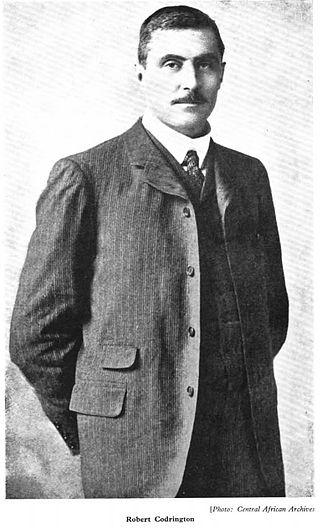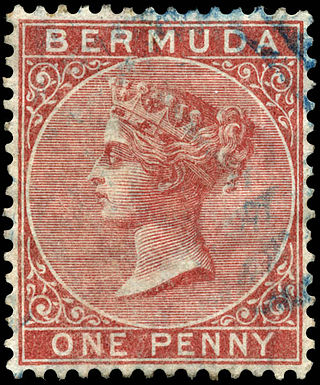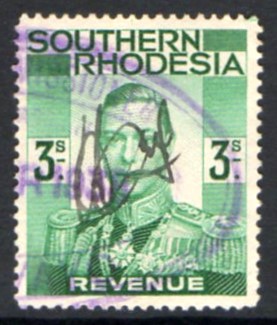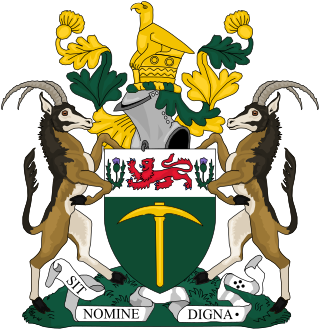
Postage stamps and postal history of Great Britain surveys postal history from the United Kingdom and the postage stamps issued by that country and its various historical territories until the present day.

The prime minister of Rhodesia was the head of government of Rhodesia. Rhodesia, which had become a self-governing colony of the United Kingdom in 1923, unilaterally declared independence on 11 November 1965, and was thereafter an unrecognized state until 1979. In December 1979, the country came under temporary British control, and in April 1980 the country gained recognized independence as Zimbabwe.

The British Central Africa Protectorate existed in the area of present-day Malawi between 1891 and 1907.

The postal history of Malta began in the early modern period, when pre-adhesive mail was delivered to foreign destinations by privately owned ships for a fee. The earliest known letter from Malta, sent during the rule of the Order of St John, is dated 1532. The first formal postal service on the islands was established by the Order in 1708, with the post office being located at the Casa del Commun Tesoro in Valletta. The first postal markings on mail appeared later on in the 18th century.

Robert Edward Codrington was the colonial Administrator of the two territories ruled by the British South Africa Company (BSAC) which became present-day Zambia. He was Administrator of North-Eastern Rhodesia, based at Fort Jameson, now Chipata, from 11 July 1898 to 24 April 1907, and then of North-Western Rhodesia, based at Livingstone from February 1908 to his death in London on 16 December 1908 from heart disease at age 39. He laid the foundation for the amalgamation of the two territories as Northern Rhodesia four years later.

This is a survey of the postage stamps and postal history of the Southern Nigeria Protectorate.

The Federation of Rhodesia and Nyasaland, also known as the Central African Federation (CAF), was a colonial federation that consisted of three southern African territories: the self-governing British colony of Southern Rhodesia and the British protectorates of Northern Rhodesia and Nyasaland. It existed between 1953 and 1963.

This is a survey of the postage stamps and postal history of Zambia, formerly known as Northern Rhodesia.

This is a survey of the postage stamps and postal history of Malawi.

This is a survey of the postage stamps and postal history of Zimbabwe.

Bermuda, a group of islands in the North Atlantic Ocean, was previously uninhabited when the British established a settlement in 1612.

The Mosely Collection of British Africa stamps dating to 1935 was formed by Dr Edward Mosely of Johannesburg, South Africa. The collection was donated to the British Museum by his daughter, Kathleen Cunningham, in 1946 and is now held as part of the British Library Philatelic Collections. After the Tapling Collection, this is considered the Library's most important philatelic acquisition due to the number of countries represented and the number of unique items included.

On 6 July 1907 the British Central Africa Protectorate became the Nyasaland Protectorate and its first stamps were issued on 22 July 1908.

The Federation of Rhodesia and Nyasaland was a short lived semi-independent state in southern Africa that existed from 1953 to the end of 1963. The state comprised the former self-governing colony of Southern Rhodesia and the British protectorates of Northern Rhodesia and Nyasaland. It issued its own revenue stamps from around 1953 to 1955, and these were withdrawn after the federation ceased to exist.

Nyasaland, now known as Malawi, first issued revenue stamps as British Central Africa in 1891 and continued to do so until the late 1980s.

Rhodesia, now divided between Zambia and Zimbabwe, first issued revenue stamps in 1890, and Zimbabwe continues to do so to this day.

The Monckton Commission, officially the Advisory Commission for the Review of the Constitution of the Federation of Rhodesia and Nyasaland, was set up by the British government under the chairmanship of Walter Monckton, 1st Viscount Monckton of Brenchley, in 1960. Its purpose was to investigate and make proposals for the future of the Federation of Rhodesia and Nyasaland, made up of Southern Rhodesia, Northern Rhodesia and Nyasaland—respectively equivalent to today's Zimbabwe, Zambia and Malawi.

The Rhodesia Prison Service (RPS) was a law enforcement agency of Rhodesia. A subdivision of the Rhodesian Security Forces, it was responsible for the administration of the Rhodesian prison system. Established in 1954 as the Southern Rhodesia Prison Department and incorporated into the federal prison service of the Federation of Rhodesia and Nyasaland, it continued as the prison service of independent Rhodesia during the UDI period. Upon Zimbabwe's independence in 1980, it was dissolved and superseded by the Zimbabwe Prison Services.

The Director of Prisons was the head of the Rhodesia Prison Service, responsible for the administration of prisons in Southern Rhodesia and later Rhodesia. The post was established in 1954 as the head of the Federal Prison Service of the Federation of Rhodesia and Nyasaland, and became head of the Southern Rhodesia Prison Service upon the Federation's dissolution in 1963. In 1965, upon Rhodesia's independence from the United Kingdom, it became the Rhodesia Prison Service. In 1980, upon Zimbabwe's independence, the office was nullified and replaced by the Director of the Zimbabwe Prison Services.

The history of the Jews in Malawi formerly known as Nyasaland, and part of the former Federation of Rhodesia and Nyasaland.






















